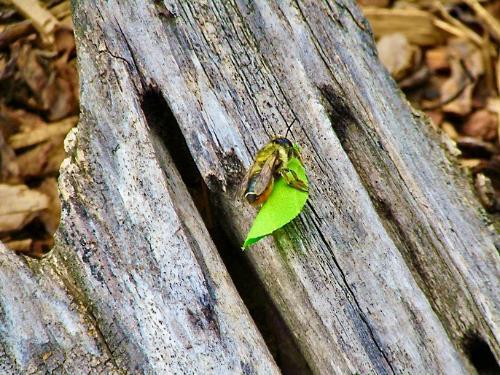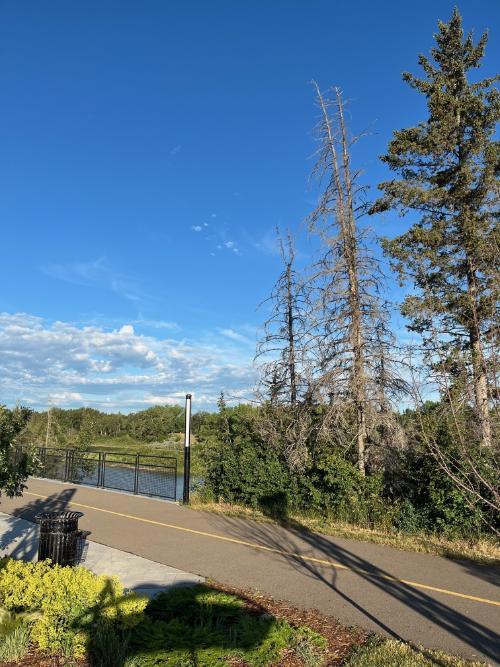Here in Capstone, we believe in the importance of environmental education. Embracing nature and being active are core to our values, as we continually seek to learn about and prioritize sustainability.
Walking through the woods we are caught up in the spiral of life, it surrounds us in all stages. Tree seedlings, young saplings, mature trees that tower above us, and those that stand leafless or have fallen to the ground at our feet. As trees transform sunlight into energy they absorb carbon dioxide, this carbon is held in place in the tree’s branches, trunks, and roots for the life of the tree, a life that continues on well after a tree stops photosynthesizing.
Through the lens of providing habitat spaces for other life forms, a tree’s life only just begins when it is through photosynthesizing. In our rush to remove dead trees from the landscape it is easy to overlook how critical they are in the circle of life.
Above: A snag providing habitat to many forms of life
Snags, another word for dead trees, are alive with a myriad of life. To start with, they are ideal perching points for birds. When you look across the horizon and see a snag, inevitably there is a bird perched in it, and if not, there soon will be. Birds love the high vantage point, unobscured by leaves, where they can watch for either prey or predators. Snags provide protection for birds in their nooks and crannies and safe nesting sites in the forms of cavities. They function as roosting and denning sites, mating display sites, and nesting sites for solitary cavity nesting bees. They are structures that support lichen and mosses, and a multitude of decomposers such as beetles, worms, and fungi which breakdown the tree into valuable organic matter that builds soil and feeds plants. Even the illusive, rarely seen (and very cute) flying squirrel requires the cavities that snags provide. Bats, a welcome member of the community, given the fact they eat up to 600 to1000 mosquitoes and hour, also use snags. They roost in the spaces behind loose bark on dead branches.

Above: A couple of snags overlooking the Red Deer River in Capstone
Like all things in the garden, snags change with time. There is joy to be found through the observation of these changes, such as watching black-capped chickadees further excavate a small hole in decaying wood, a cavity that may have been home to a house wren the previous year. Or in seeing a leaf cutter bee carry her perfectly cut leaf section into a hole in a dead branch where she will use it to line her egg chamber. Or watching the appearance of the ephemeral fruiting bodies of fungi along the tree’s decaying trunk and roots. Beautiful and alluring forms such as giant puff balls, bracket fungi, lions mane, turkey tail, and chaga. Over time, mosses, liverworts, and hornworts, cover the snag with intricately delicate forms that, along with the fungi, transform the snag into a dynamic, living art form.
Above: Fungi and moss growing on a decaying tree truck
Snags, rich with life, are essential to a holistic landscape that sustainably supports biodiversity. Once we learn how essential dead trees are to so many species, from the visible to the invisible, we are able to see them in a new light and embrace their presence within the landscape.
A contributed article by Cynthia Pohl, owner of Living Lands Landscape and Design and a professional Journeyman Landscape Gardener and accredited Green Roof Professional.
For more information, please visit https://living-lands.ca/
Recent Articles
July 16, 2024
Exploring the Ecological Importance and Joy of Snags in Capstone
April 22, 2024
Capstone Redevelopment Program Seizes Opportunity to Shine
January 19, 2024
Project ground-breaking brings confidence to downtown Red Deer and anchors community vision
September 27, 2023
Densification an important consideration for Capstone
July 27, 2023
Capstone's Retail Offerings